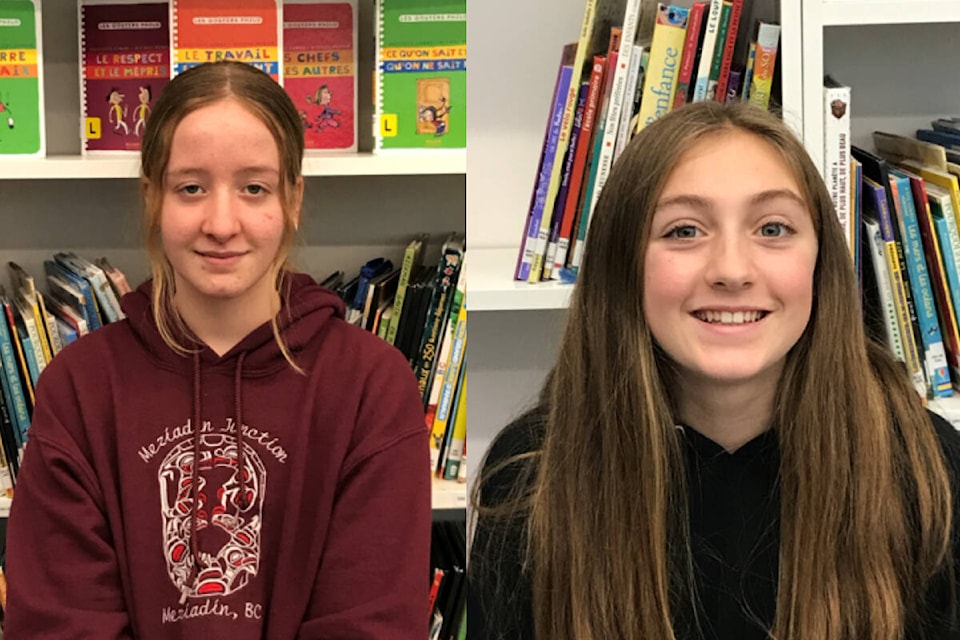A domed climate-controlled city, a greenhouse that captures CO2 from the air, a robotic garbage collector to respond to flooding, and clothing with woven-in technology that cools you down or heats you up.
Those are some of the solutions to living in a warmer climate submitted by elementary school students in the Kootenays in the Contraction Contest run by the Kootenay Association for Science and Technology (KAST) and sponsored by FortisBC.
The contest rules challenged contestants to look ahead to 2050 and invent a contraption that would help us live in a warmer climate. They were asked to provide drawings and an explanation of their projects.
The winner in the kindergarten category was Cedar Mannema, who attends Rosemont Elementary.
He submitted a proposal for a robot programmed to pick up garbage and seaweed that has floated onto land from flooding, and propellers to help fish swim in fish bowls, both powered by sea water.
He also proposed that the city build “a lab with a professor that is doing experiments to help the town.”
The Grade 3 winner was Nelson’s Lacey Williams from the Kootenay Area Girl Guides, who proposed the Water Dropper, a contraption that functions like a water wheel but with buckets as large as a car, that would pull water out of lakes and rivers onto wildfires when there were not enough helicopters.
Jack Denny of Nelson won the Grade 5 category, with a plan for Domed City, which he said “protects people inside from smoke, storms, fires, tornadoes, hurricanes, floods and drought. Inside the dome is temperature controlled. The air is purified and fresh. There is a filtration system to make fresh water. We will have factories for food processing, and grow our own fruits and vegetables.”
The Grade 6 winner, and grand prize winner, was JP Delos Santos, a student at J.A. Laird Elementary in Invermere.
He proposed a new type of clothing that heats or cools the wearer with built-in sensors, solar panels, mini-fans and heat transfers.
Elsa Troutet, the Grade 7 winner, a student at École des Sentiers-Alpins near Nelson, came up with the idea of self-sufficient greenhouse that is solar heated with the assistance of infrared lamps, and is temperature controlled. In case of flooding, the greenhouse will float. Gutters on the outside of the greenhouse collect water and irrigate the plants. Three filters on the greenhouse take carbon dioxide out of the air and feed the plants.

Arianna Malara, also a student at École des Sentiers-Alpins and the Grade 8 winner, envisioned Deep Glitch, a solar-powered appliance that is kept at the bottom of the ocean and cools the water.
“It keeps the zooplankton alive,” she wrote in her contraption proposal. “They are a very important element in the food chain. Without them the ocean would be empty, the carbon would increase in the air, and that would influence all our lives.”
Other winners were: Grade 1, Charlie Taylor of Erickson; Grade 2, Harper Dingwall of Kimberley; and Grade 4, Shane Smith of Lister.
The educator prize went to Anne Simonen of the Kootenay Area Girl Guides, who proposed The Convertible Play Yard, a play area that features various ways of adapting to changes in weather.
For his grand prize, Delos Santos received an Ozo Bot, a desktop coding robot.
All other winners took home a STEAM kit for their classroom, containing technology learning resources. (STEAM is a stream of learning that encompasses science, technology, engineering, arts and math.)
Tanya Malcolm, one of the organizers of the contest, says KAST received 105 entries from seven school districts. She says the goal was to encourage innovative thinking and looking forward.
The contest rules that were presented to the contestants acknowledge that the impacts of climate change are all around us.
“I think that’s an important part of the conversation,” Malcolm said, “and also for kids to put on their futurist hats and think about some of the innovation that can happen, and how far we’ve come already.”
She said she was was uplifted by the results.
“It’s inspiring to get inside of the minds of youth in this capacity,” she said. “The results are really quite expansive in terms of what they’re thinking about – [for example] a middle schooler thinking about clothing that adjusts to your body temperature. It is fascinating to me.
“Science and technology has created so much opportunity for youth that I get really excited for them. I can’t wait to see the world we’re going to be living in and the leaders that are going to be coming out of this region.”
Later this month, KAST’s youth program GLOWS will offer a tech camp series for age 10-plus on coding in the popular video game Minecraft. The first camp starts Jan. 29 from 9 a.m. to noon. Find more details at https://kast.com/event/minecraft/.
In March, GLOWS will celebrate International Women’s Day with their Girls In STEAM and Leadership conference Quantum Leaps! GLOWS is looking for STEAM professionals to volunteer or sponsor – contact tanya@kast.com to learn more.
READ MORE:
• Kootenay Contraption Contest challenges students, educators
bill.metcalfe@nelsonstar.com
Like us on Facebook and follow us on Twitter
